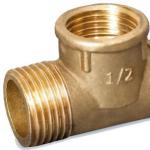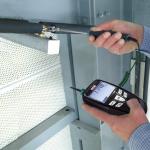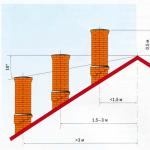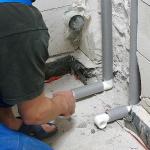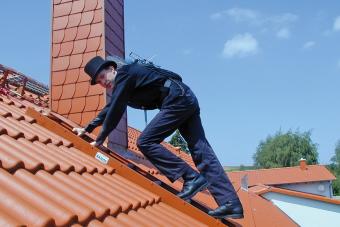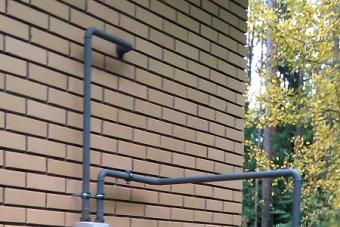Safe and comfortable use of stoves and fireplaces is impossible without good draft, which, in turn, depends on the condition of the chimney. How to clean the chimney from soot and prevent it from clogging, you will learn from this article.
Why do soot deposits and blockages appear?
At first glance, it seems that after burning firewood, the smoke disappears without a trace, but this is not at all the case. In addition to the gaseous products of combustion, the smoke contains solid particles, it is they who settle on the walls of the smoke channel, forming a gray or black coating. Water vapor, which is also contained in the smoke, holds the soot together, and the plaque becomes dense and hard. Narrow places, turns of the smoke channel, as well as rough walls of brick pipes are especially prone to clogging.

Soot deposits in the pipe
In addition, mechanical blockages are possible: garbage accidentally falling into the pipe, tree leaves, bird nests or bricks that have fallen out of the masonry. Even a small blockage can worsen draft, and soot deposited on a foreign object quickly clogs the chimney, making it impossible to continue operating the stove. There are several ways to clean the chimney from soot and blockages, which are described below.
Chimney cleaning methods: which one to choose?
Methods for cleaning chimneys and chimneys are quite diverse, from folk methods, proven for centuries, to modern ones based on scientific developments. Let's take a closer look at all of them.
Folk remedies
Our ancestors knew well the characteristics of different types of wood. Coniferous firewood contains a large amount of resins emitted along with smoke. Poorly dried, damp wood smolders, gives off little heat, and at the same time emits water vapor, which settles on the walls of the pipe, fastening loose soot into a monolith. Best of all, dry hardwood firewood is suitable for burning stoves: birch, alder, aspen. They burn with increased heat transfer, practically do not give soot and soot and do not clog the pipe.
To clean the chimney in the old days, aspen firewood was used, burning with the formation of a high hot flame. When the walls of the chimney are heated, the soot loosens and burns out, and its remnants are carried out through the chimney along with the smoke. Many modern pipe cleaning methods are based on the same principle, which are described below. For the prevention and periodic cleaning of the chimney, you can use this old method by throwing several dry aspen logs into the heated firebox. At the same time, it is necessary to observe fire safety and prevent overheating of pipes.

Another interesting folk method for cleaning a chimney is to burn dried potato peels. When they are burned with smoke, substances are released that loosen the soot and make it easy to remove it through the cleaning holes.
Video - a folk method for cleaning the chimney
Folk methods are interesting, but sometimes ineffective, especially when a blockage has already formed. In this case, it is more reasonable to resort to chemical cleaning of pipes.
Chemical cleaning of the chimney
Furnace stores offer a large selection of various products that allow you to clean the chimney from soot without any hassle. These products come in the form of powders, tablets, liquids or briquettes that mimic logs or pellets. Their use is quite simple: you need to put the package in a stove or fireplace and burn it, together with firewood or separately. Detailed instructions are usually indicated on the package, as is the dosage.
Powder cleaners are usually packaged in single-dose sachets, depending on the degree of contamination of the pipe and chimney, one or more bags may be needed. They are thrown into the fire after kindling the furnace, without opening. The appearance of a blue or green flame indicates that the product is working and releasing chemically active substances that break down soot and plaque.

Means for chemical chimney cleaning
Cleaning pellets or logs are more convenient to use, they are simply placed in a fireplace or stove right in the package and set on fire, after which they continue to burn the stove for one to two hours. During this time, the resins and creosote that hold the soot in the chimney decompose, and small particles are carried out with the smoke, and large blockages fall down. Therefore, after cleaning and cooling the furnace, it is recommended to inspect the smoke channel through the doors specially designed for this.
Cleaning the chimney to prevent blockages is carried out several times a year. If the oven is used no more than once a week, it is enough to use these products a couple of times a year. With the daily burning of the stove or the use of low-quality firewood, prevention is carried out more often, once every two months, without waiting for the chimney to become overgrown with soot.
Mechanical cleaning of the chimney
In case of serious blockages caused by a strong narrowing of the lumen or debris entering the pipe, chemical agents may be powerless. The operation of the stove becomes impossible and very dangerous - deposits on the walls of the chimney ignite when overheated, and together with the smoke, sparks or even flames escape from the chimney. In dry weather, this can cause a fire. If there is no draft at all in your stove, and the smoke goes inside the room, it must be cleaned mechanically, using a special tool.
Devices designed to clean the chimney from soot and soot are very diverse: these are brushes, scrapers, ruffs of various configurations and sizes, as well as cores on a strong cable that break through dense blockages. They can be purchased at specialized stores or made by hand.
Video - how to make a ruff for cleaning the chimney with your own hands
Chimney cleaning is usually carried out from top to bottom: they break through blockages in the chimney, clean it with scrapers, ruffs and brushes, after which they clean the smoke channels through the cleaning doors, and lastly clean the dampers and the firebox itself, as well as the ash pan. Chimney pipes of a simple configuration can be cleaned from below, with the help of ruffs on a long handle. How to clean the chimney mechanically is described below.
Chimney cleaning technology
1. Before taking on the role of a chimney sweep, take care of your own safety. It is necessary to install a convenient ladder on the roof and take care of insurance that will not allow you to fall. When cleaning the chimney, use a respirator.

Work Safety Measures
2. The dampers are open, otherwise soot will accumulate on them, which can lead to even more clogging. But the doors - furnace, ash and cleaning - must be tightly closed so as not to stain furniture and floors with soot. It is better to hang open fireplace inserts with a damp cloth, which is not a pity to throw away - most likely it will not work to wash it off.
3. Cleaning starts from the top, from the chimney. Before cleaning, remove the head from the pipe, remove soot at an accessible distance with a scraper or a stiff brush. The tool can be extended with an extendable handle.

Cleaning starts with a pipe
4. Inaccessible parts of the chimney are cleaned using a flexible brush - a cable with a nozzle at one end and a handle for rotation at the other. The diameter of the nozzle should exceed the diameter of the pipe by 1.2-1.3 times. The cable is inserted into the chimney and begin to gently advance by turning the handle.

Flexible brush for cleaning pipes from soot
5. If the ruff gets stuck, it means that a serious blockage has formed in the chimney, and it can only be broken through with the help of a core. The core on the cable is sharply lowered into the chimney, trying not to touch the walls so as not to chip the brick. Having eliminated the blockage, continue cleaning with a ruff.

Pipe cleaning core
6. After cleaning the pipes, they begin to remove soot through the cleaning doors. In a complex furnace, as a rule, there are several of them, and they are located in the places where the smoke channel turns. First, the soot that has fallen from above is raked out, then the smoke channel itself is cleaned with scrapers and a ruff. At the same time, they move from top to bottom, to the firebox. In fireplaces with a direct chimney, there may not be any cleaning doors at all, and all the soot immediately falls into the furnace.

Cleaning of smoke channels from soot
7. The furnace and ash pan are cleaned last. Final cleaning can be done with a vacuum cleaner. If your vacuum cleaner is equipped with a fabric dust bag, it is better to buy a disposable paper bag for this purpose, since it is impossible to clean it of soot.

Removing soot from the furnace with a vacuum cleaner
8. Melt the stove and check the draft. If cleaning has eliminated the blockage, then after the furnace has cooled down, the head is put back on. If the draft has not improved, the smoke channel in a hard-to-reach place may be clogged, and you can no longer do without the help of a qualified stove-maker.
9. In the future, when using the stove, do not neglect the prevention of blockages using the folk or modern methods described above.
To prevent the chimney from overgrowing with soot, you must follow a few simple rules:
- It is better to use dry firewood from deciduous trees as fuel, and at the end of the firebox, periodically place aspen or preventive measures in the furnace.
- Do not burn garbage in the oven, especially plastic, polyethylene, wrapping paper.
- To reduce moisture condensation, the chimney must be insulated, especially if it is made of metal. Usually, ready-made double sandwich pipes with a layer of non-combustible insulation are used.
- It is imperative to put a cap on the pipe to protect it from accidental ingress of debris or precipitation.
With proper use of the stove, the question "how to clean the chimney from soot" will arise very rarely, and you will be able to fully enjoy the bright flame and heat.
